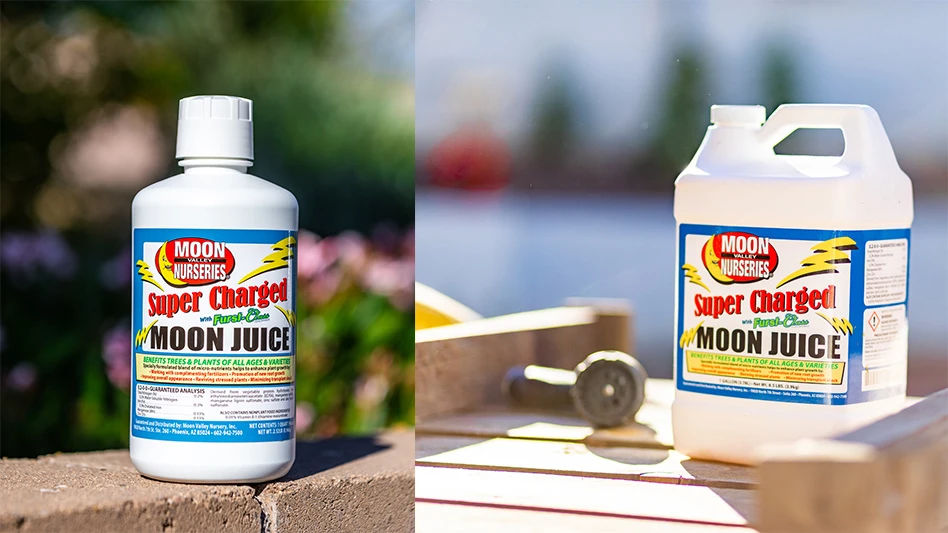 The Japanese beetle (Popillia japonica Newman) was first discovered in the U.S. in a nursery in southern New Jersey in 1916. It quickly spread across the eastern U.S., arriving in Chicago in 1932 and into St. Louis in 1936. It was largely confined to urban Illinois until the late 1990s. Since then Japanese beetles have spread throughout most states east of the Mississippi River. However, partial infestations also occur west of the Mississippi River in states such as Arkansas, Iowa, Kansas, Minnesota, Missouri and Oklahoma.
The Japanese beetle (Popillia japonica Newman) was first discovered in the U.S. in a nursery in southern New Jersey in 1916. It quickly spread across the eastern U.S., arriving in Chicago in 1932 and into St. Louis in 1936. It was largely confined to urban Illinois until the late 1990s. Since then Japanese beetles have spread throughout most states east of the Mississippi River. However, partial infestations also occur west of the Mississippi River in states such as Arkansas, Iowa, Kansas, Minnesota, Missouri and Oklahoma.
APHIS maintains a Japanese beetle quarantine. The objective of the quarantine is to protect the agriculture of the Western U.S. and prevent the human-assisted spread of the beetle from the Eastern U.S. The federal quarantine is designed to reduce artificial spread of Japanese beetles by aircraft. The Western states protected by the Japanese Beetle Quarantine are: Arizona, California, Colorado, Idaho, Montana, Nevada, Oregon, Utah and Washington.
Japanese beetle adults attack the foliage, flowers or fruits of more than 300 different ornamental and agricultural plants. That’s not all. The beetles feed on grass roots, and the larval beetle grubs damage lawns, golf courses and pastures.
The Guide
Follow these tips to prevent Japanese beetles from damaging your crops.
Insecticides: repeat as necessary.
Both pyrethroids and carbaryl provide around two weeks of protection. For adults, repeated applications may be necessary because of the relatively short residual effect of the pesticides. Insecticides that are advertised as organic usually do not kill adults. Formulations with pyrethrins and PBO (piponeryl butoxide) are more effective.
Soil-applied imidacloprid is systemic and translocated around the plant and kills adults when feeding on foliage. However, when adults feed on petals of shrub roses rather than the spiny leaves, imidacloprid is not effective.
Chemical connection.
The search for a mate is aided by a chemical pheromone that allows males and female beetles to find each other. This chemical signal can travel far, and the beetles are strong flyers determined to find the source.
Where there’s a bunch, there is bound to be more.
The presence of beetles on a plant attracts more beetles. Thus, by not allowing beetles to accumulate, plants will be less attractive to other beetles. One of the easiest ways to remove Japanese beetles from small plants is to shake them off into jars filled with soapy water.
The Facts about Japanese beetle
Locations
Japanese beetles have been found in 34 states since its introduction to the U.S. in 1916.
 Control
Control
Control of adults can be difficult. Insecticides can reduce damage, but applications may need to be repeated every three to four days since new migrations of beetles can occur daily. Physically removing beetles from plants can be an effective control measure in small areas. By removing beetles and dropping them into a container of soapy water to kill them, the pheromone they release to attract other beetles is removed as well. Smaller or more valuable plants can be protected with floating row covers. Japanese beetle traps are generally not recommended because the pheromone tends to bring more Japanese beetles into the area than are captured. In rural areas, consider placing traps a quarter mile away from susceptible plantings. And if you do decide to use a trap, be prepared to change it very often. Commercial trap bags hold only about 4,000 beetles.
Damage
Adults feed on the foliage and fruits of several hundred species of fruit and ornamental trees, shrubs, vines, and field and vegetable crops. Adult beetles prefer to feed on the upper surface of leaves, especially those in full sun. They leave behind skeletonized leaves and large, irregular holes in leaves.
Appearance
The larva is a C-shaped grub that will be about 1 inch long at maturity and are usually found in a curled position. The grub will have a brown head and grayish-black rear end. The adult Japanese beetle is just under ½ inch long and has a shiny, metallic-green body and bronze-colored wing covers. There are six small tufts of white hairs along its side.
Life Cycle
The Japanese beetle has egg, grub, and adult stages. In June, the grub turns into a pupa. It emerges from the soil in late June and July as an adult, to mate and lay eggs. Females live for a few weeks feeding on trees, shrubs and roses in the morning, returning to the turf in the afternoon to lay more eggs. Eggs hatch in July and grubs are almost full grown by late August. Grubs dig deep in the soil for the winter months and then move upward in spring as the soil warms. Grubs do best in warm, slightly moist soil that has plenty of organic matter and tender grasses. However, they can survive in almost any soil.
Shortly after the adult female lays her eggs in the summer, the larva will hatch and begin feeding. The larva will molt twice before moving below the frost line to spend the winter months. The following spring, the larva will resume feeding and molt twice more before emerging as an adult in the early summer months.
Adult beetles usually emerge from the soil in early summer. Once the insects have emerged from the soil, they start searching for food and a mate. The beetles will meet on various host plants, feed, and mate. The female periodically leaves the plant and lays a clutch of several eggs about three inches deep in the ground. Typically, this behavior will begin to taper off by late summer.
Chemical Control
There are different insecticides to use for Japanese beetle larvae and adults. Check The Guide (above) for more information, or check with your local extension.
Biological Control
Grubs may be biologically controlled with the use of milky spore disease, Bacillus papillae, which is available in several formulations. This disease is introduced to the soil so that when the grubs begin feeding, they catch the disease, turn milky white, and later die. However, effectiveness of these products varies greatly.
Sources: University of Illinois Extension, University of Minnesota Extension, USDA-APHIS

Explore the December 2015 Issue
Check out more from this issue and find your next story to read.
Latest from Nursery Management
- Plant breeding as an art
- Society of American Florists accepting entries for 2025 Marketer of the Year Contest
- Sustainabloom launches Wholesale Nickel Program to support floriculture sustainability
- American Horticultural Society welcomes five new board members
- Get to know Christopher Brown Jr. of Lancaster Farms
- American Floral Endowment establishes Demaree Family Floriculture Advancement Fund
- The Growth Industry Episode 3: Across the Pond with Neville Stein
- The Growth Industry Episode 2: Emily Showalter on how Willoway Nurseries transformed its business





